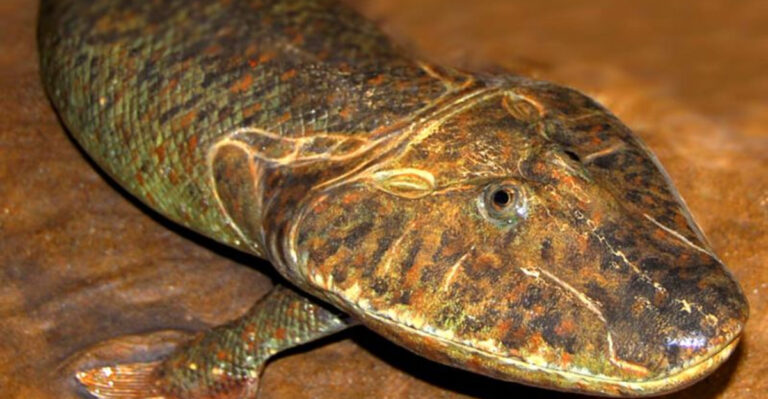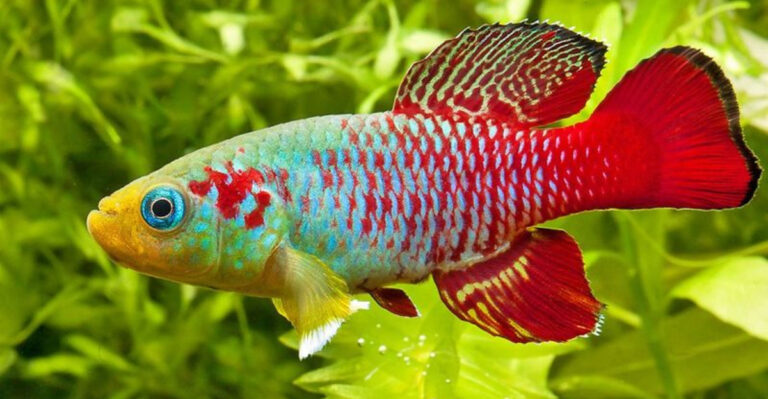11 Sea Creatures Scarier Than The Megalodon
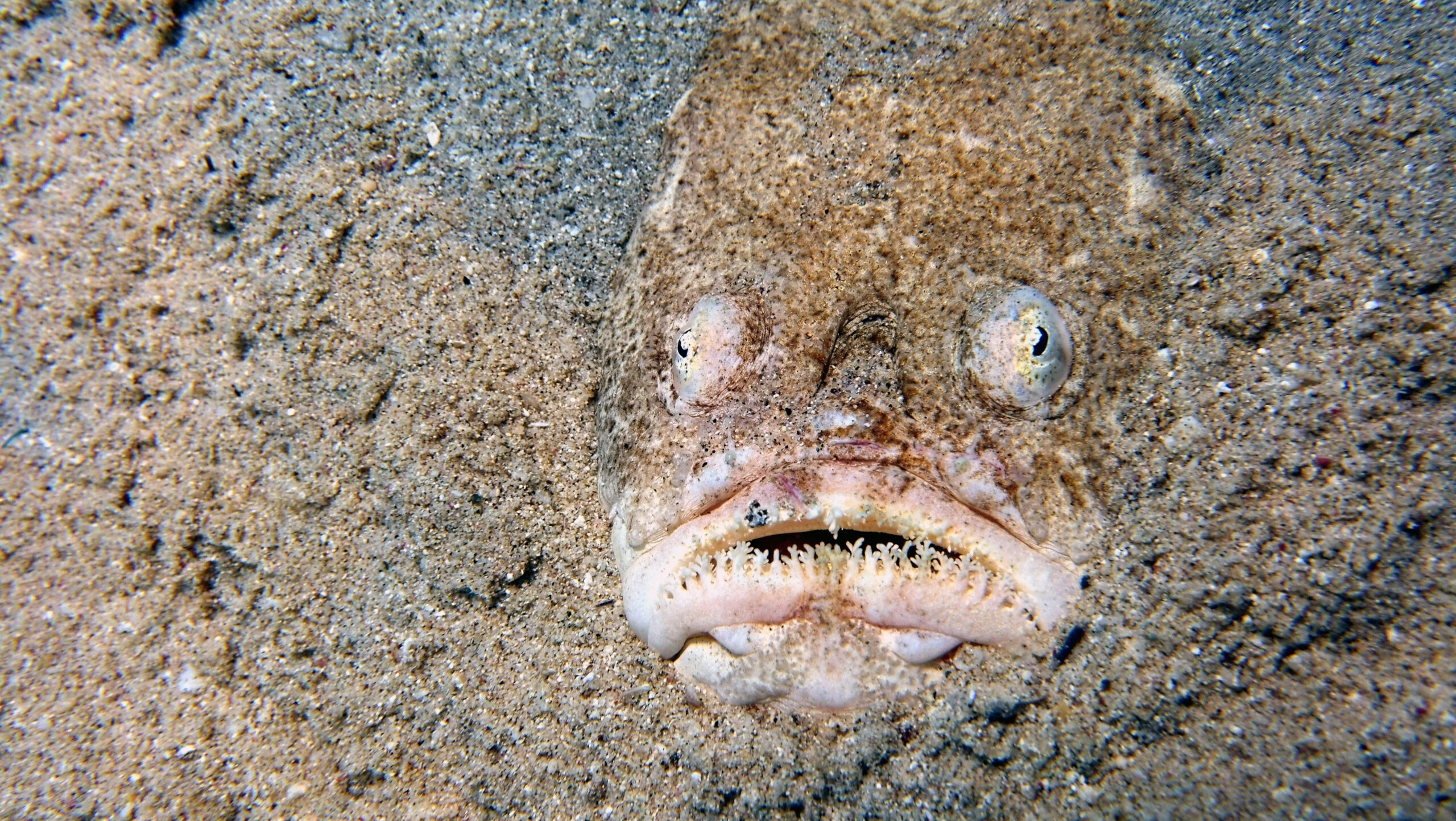
The ocean, vast and mysterious, harbors creatures both fascinating and fearsome. While the Megalodon has long captured our imaginations as the ultimate predator, there are other sea dwellers that inspire even greater awe and terror.
From the depths of the Mariana Trench to the icy waters of the Arctic, these sea creatures rival the infamous Megalodon in their capacity to both mystify and intimidate. Join us on this journey through the deep to discover these extraordinary beings.
1. Giant Squid
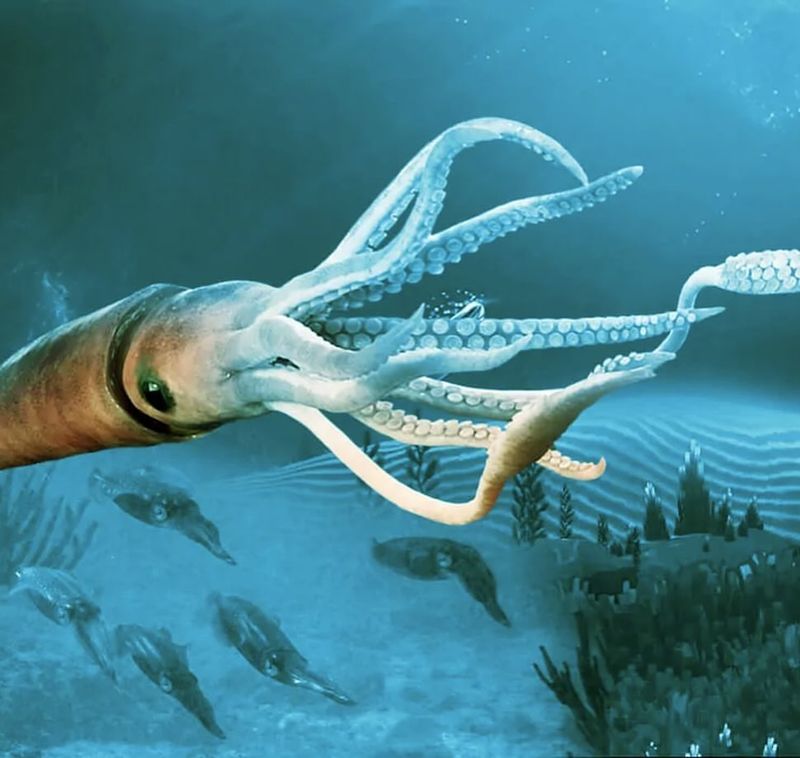
In the pitch-black depths of the ocean, the giant squid reigns supreme. This elusive creature, with eyes the size of dinner plates, navigates its shadowy realm with ten long tentacles. These appendages are not just for show; each is lined with powerful suckers capable of gripping onto prey with deadly precision.
Despite its size, the giant squid remains one of the most mysterious inhabitants of the deep. Few have been observed in their natural habitat, leaving much about their behavior and life cycle shrouded in mystery. What is known, however, is their immense strength and agility.
In the battle for survival, the giant squid often comes face-to-face with its only known predator: the sperm whale. These titanic clashes leave remnants of tentacles and sucker marks as evidence of their epic encounters. Such scenes underscore the squid’s formidable place in the ocean’s hierarchy.
2. Colossal Squid
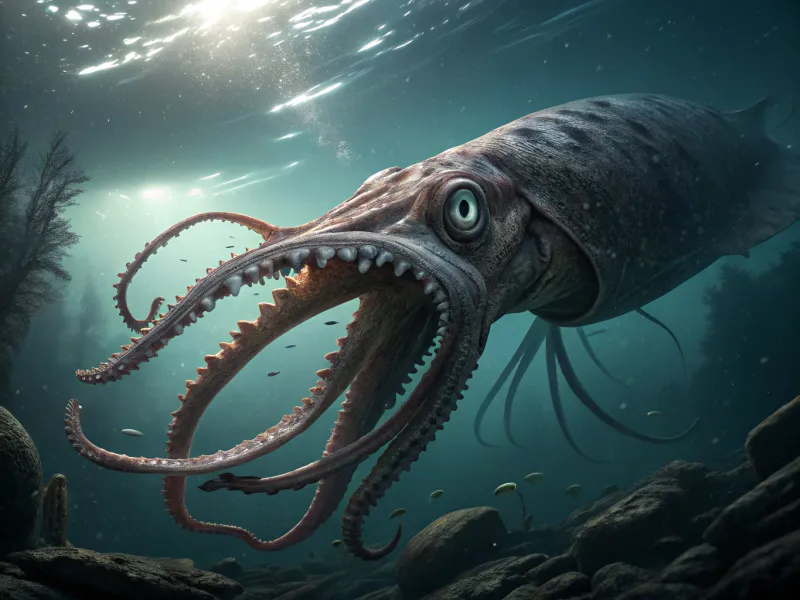
Far larger than its giant cousin, the colossal squid is a creature of legend. Found in the icy waters of Antarctica, this behemoth possesses the largest beak of any squid, capable of slicing through its prey with ease.
Its eyes are the largest in the animal kingdom, allowing it to detect faint movements in the dark ocean depths. The colossal squid is an apex predator, feared by many yet seen by few. Its tentacles are equipped with sharp hooks, adding to its arsenal of deadly defense mechanisms.
Scientists believe its sheer size and strength make it nearly invincible in its remote habitat. Encounters with this leviathan are rare, and much about its life remains a mystery.
However, those who have studied remains washed ashore describe an awe-inspiring creature, its massive bulk a testament to the untamed power of the ocean.
3. Goblin Shark
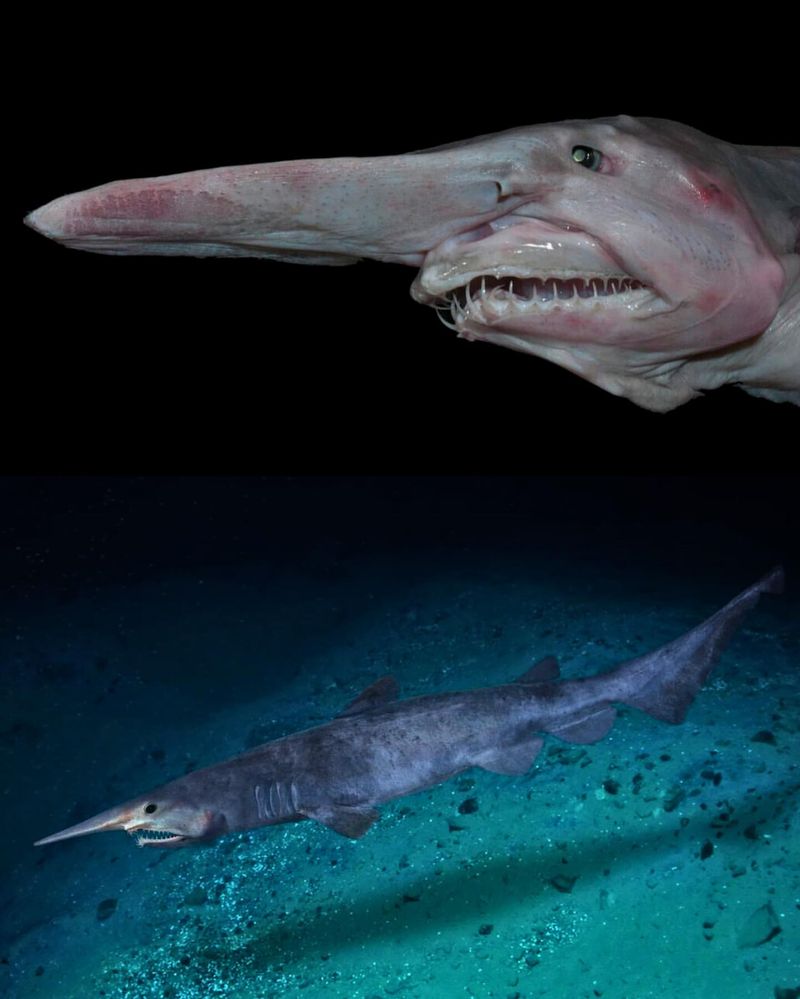
The goblin shark, with its bizarre appearance, is often dubbed the ‘living fossil’ of the sea. Found primarily in the deep waters off Japan, this creature is a master of stealth hunting.
Its long snout is packed with sensory organs, enabling it to detect the electric fields of its prey. What sets the goblin shark apart is its jaw mechanism. In a flash, it can extend its jaws forward to catch unsuspecting prey, pulling them into its razor-sharp teeth.
This jaw-snapping action is as terrifying as it is efficient. Despite its fearsome looks, the goblin shark is not aggressive towards humans, preferring to linger in the deep ocean. Its alien-like animal appearance in fishing nets is often accidental, leading to more questions than answers about its secretive life.
The goblin shark, with its otherworldly features, continues to captivate and frighten those who encounter it.
4. Fangtooth Fish
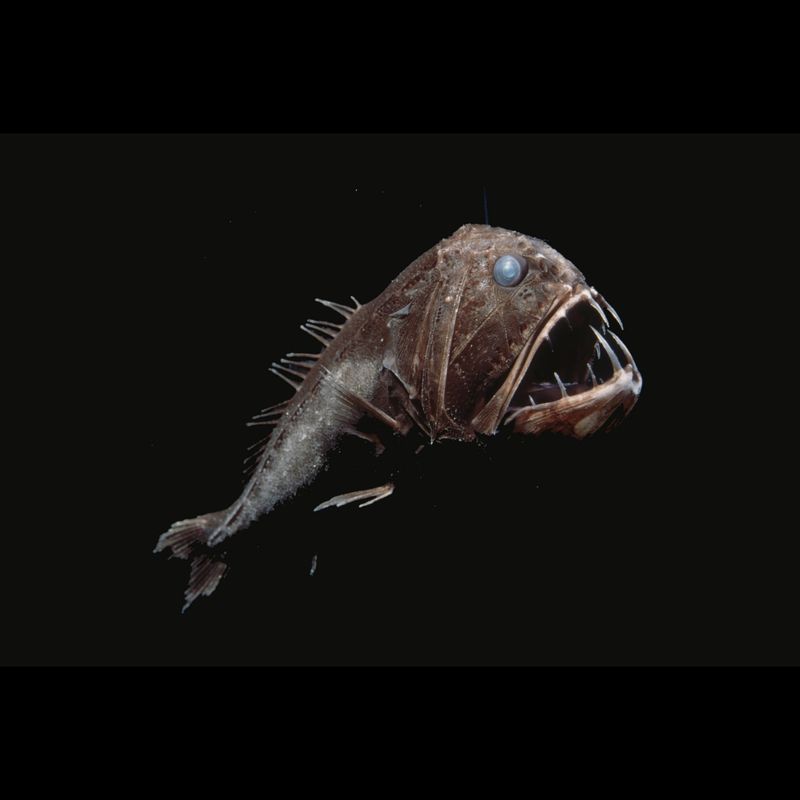
In the cold, dark abyss, the fangtooth fish stands out with its frightening appearance. Despite its small size, its teeth are the largest in proportion to body size of any fish, resembling menacing spikes. These oversized fangs fit into special sockets in its brain when its mouth is closed.
Living at depths where sunlight never penetrates, the fangtooth relies on senses beyond sight to hunt. Its acute sense of smell and lateral line system detect the slightest movements of prey, making it a formidable hunter.
Bioluminescent organisms provide occasional illumination in its shadowy world, reflecting off the fangtooth’s rough, dark skin. This eerie light adds to the fish’s terrifying aura, as it navigates the ocean depths.
Though small, the fangtooth is a testament to the ocean’s ability to produce creatures that defy imagination.
5. Anglerfish
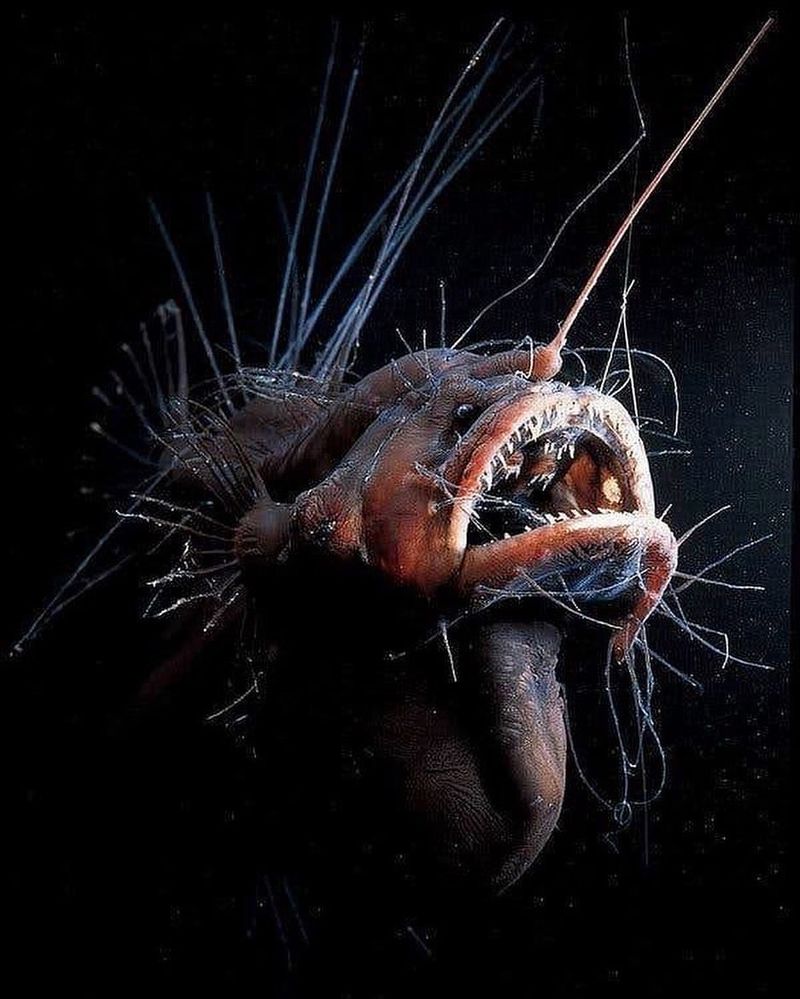
Deep in the ocean’s inky blackness, the anglerfish lures its prey with a lighted appendage that dangles in front of its mouth. This bioluminescent ‘fishing rod’ is a clever adaptation, attracting curious prey directly into the anglerfish’s gaping maw.
With its grotesque appearance, the anglerfish is not just a hunter but a symbol of the ocean’s uncanny adaptability. Its enormous mouth and expandable stomach allow it to consume prey half its size, a necessity in its nutrient-scarce environment.
The anglerfish’s mating habits are equally bizarre. In some species, the much smaller male fuses permanently to the female, living parasitically.
This unique method ensures reproduction in the vast, lonely expanse of the deep sea. The anglerfish’s chilling visage and strange behaviors make it a captivating yet terrifying sea creature.
6. Vampire Squid
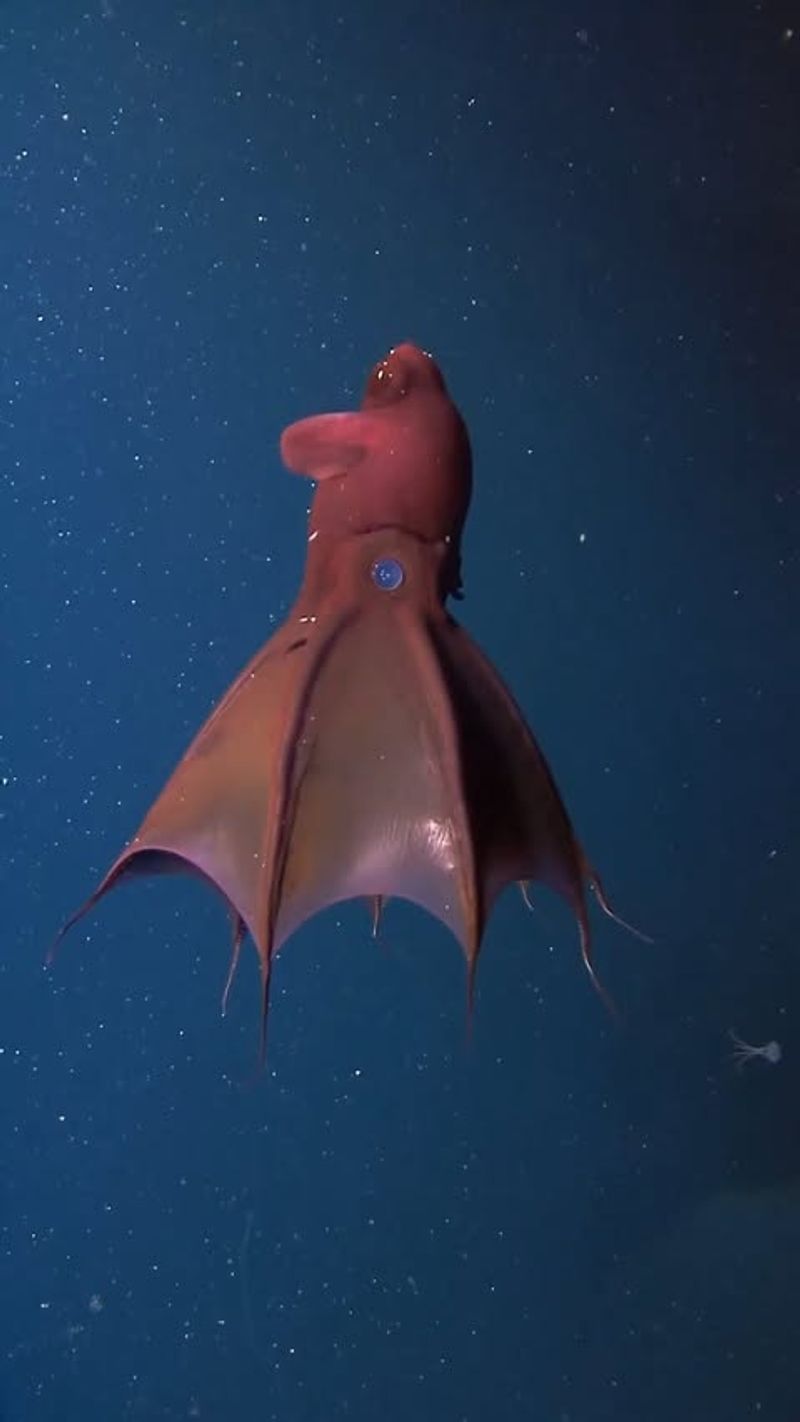
Residing in the oxygen-depleted depths of the ocean, the vampire squid is a master of survival. Despite its ominous name, it feeds on marine snow—organic debris falling from the upper layers of the ocean. Its cloak-like arms, lined with spines, give this squid a vampire-like appearance.
Bioluminescence is key to the vampire squid’s defense. It ejects a cloud of glowing mucus to confuse predators, allowing a quick escape. This dazzling display is both a survival tactic and a mesmerizing sight in the dark ocean.
Capable of inverting its body to protect its delicate head, the vampire squid showcases unique adaptations.
Its large, red eyes are perfectly suited for the dark, making it one of the most efficient creatures in its environment. The vampire squid’s eerie appearance and unique traits make it a standout among deep-sea dwellers.
7. Frilled Shark
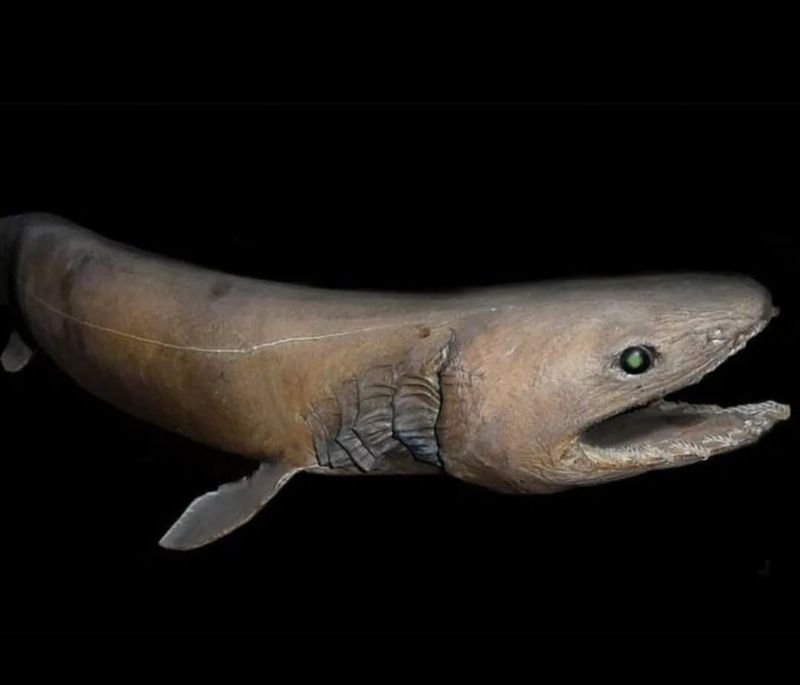
Often described as a ‘living fossil,’ the frilled shark is a relic of the past. This eel-like shark inhabits the deepest parts of the ocean, and its appearance has changed little over millions of years. Its six gill slits, lined with frilly edges, give it its name.
The frilled shark’s mouth is filled with needle-sharp teeth, perfect for snagging soft-bodied prey. Its long, flexible body allows it to lunge like a snake, capturing prey with a swift strike. This hunting method is effective in the dark, expansive waters it calls home.
Little is known about the frilled shark’s life due to its elusive nature. Rarely seen by humans, it remains a mysterious yet fascinating creature. Its primitive features and deep-sea lifestyle make the frilled shark a remarkable representative of ancient oceanic life.
8. Stargazer Fish
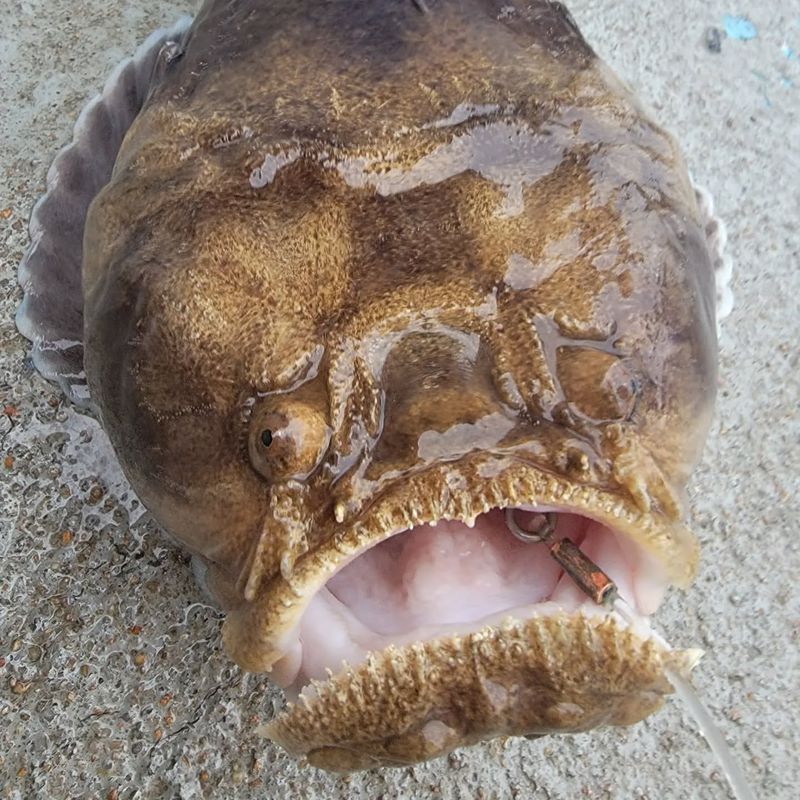
Camouflaged beneath the ocean’s sandy floor, the stargazer fish is a master of disguise. Its eyes and mouth are positioned on top of its head, giving it a unique, upward-facing appearance. This peculiar orientation allows it to ambush prey from below, a strategy that earns its name.
Equipped with electric organs, the stargazer can deliver a shock to stun prey, adding another layer to its predatory arsenal. Its ability to blend seamlessly with its surroundings makes it a hidden threat in the ocean’s shallows.
Despite its aggressive hunting technique, the stargazer is not typically dangerous to humans, although it can deliver a painful shock if provoked. Its deceptive appearance and effective hunting strategies highlight the ingenuity of ocean life.
The stargazer fish, with its startling adaptations, is a testament to the ocean’s diverse and fearsome inhabitants.
9. Giant Isopod
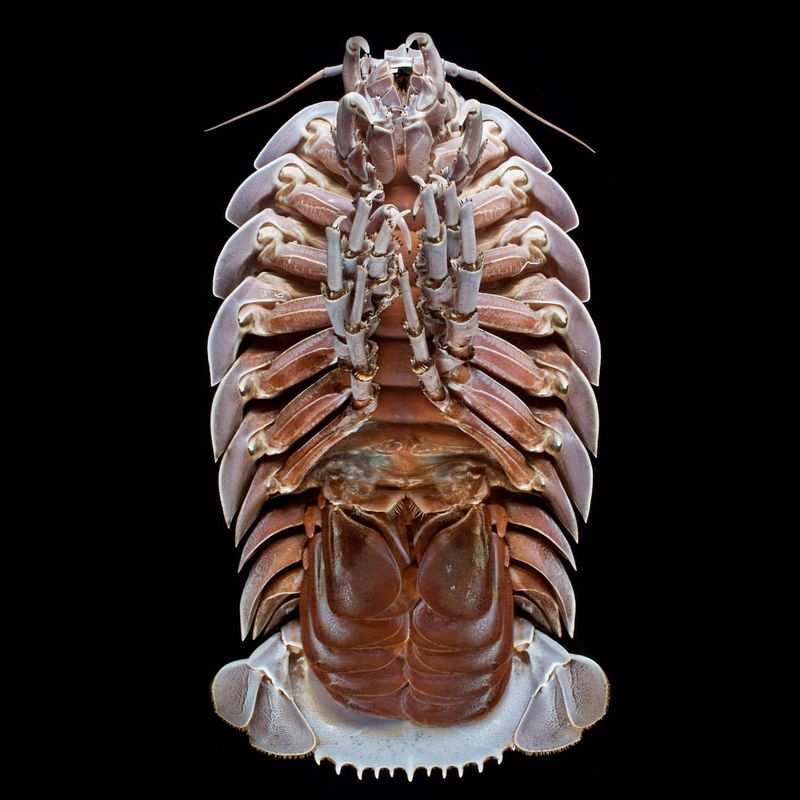
Resembling an oversized pillbug, the giant isopod prowls the ocean floor with a prehistoric appearance. Found in the cold, dark depths, this scavenger feeds on dead marine life and detritus, playing a vital role in the ocean’s ecosystem.
The giant isopod’s tough exoskeleton provides protection against predators, and its ability to survive long periods without food showcases its resilience. This creature can grow to the size of a basketball, making it one of the largest members of its family.
Its slow, methodical movements contrast with the fast-paced life of other sea creatures, yet its size and durability command respect.
The giant isopod’s bizarre appearance and essential ecological role make it an intriguing inhabitant of the deep sea, reminding us of the ocean’s capacity to produce unique life forms.
10. Deep Sea Dragonfish
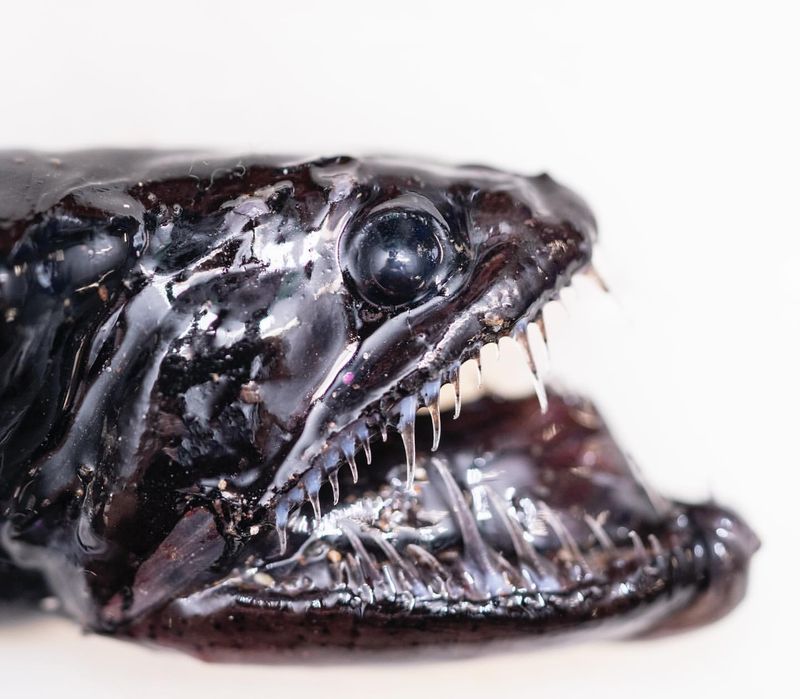
In the perpetual darkness of the deep sea lives the dragonfish, a predator equipped with fearsome fangs and a light-producing barbel. This bioluminescent lure entices prey close, allowing the dragonfish to strike with lethal precision.
Despite its fearsome appearance, the dragonfish is a small creature. Its ability to produce light not only helps in hunting but also in communication and camouflage. The dragonfish can modulate its light to blend into the faint glow of the ocean, avoiding detection by both prey and predators.
The dragonfish’s adaptations to the deep sea are remarkable, showcasing the extreme conditions of its environment. Its combination of stealth, agility, and bioluminescence makes it one of the ocean’s most efficient hunters.
The deep sea dragonfish embodies the mysterious and awe-inspiring nature of ocean life.
11. Sarcastic Fringehead
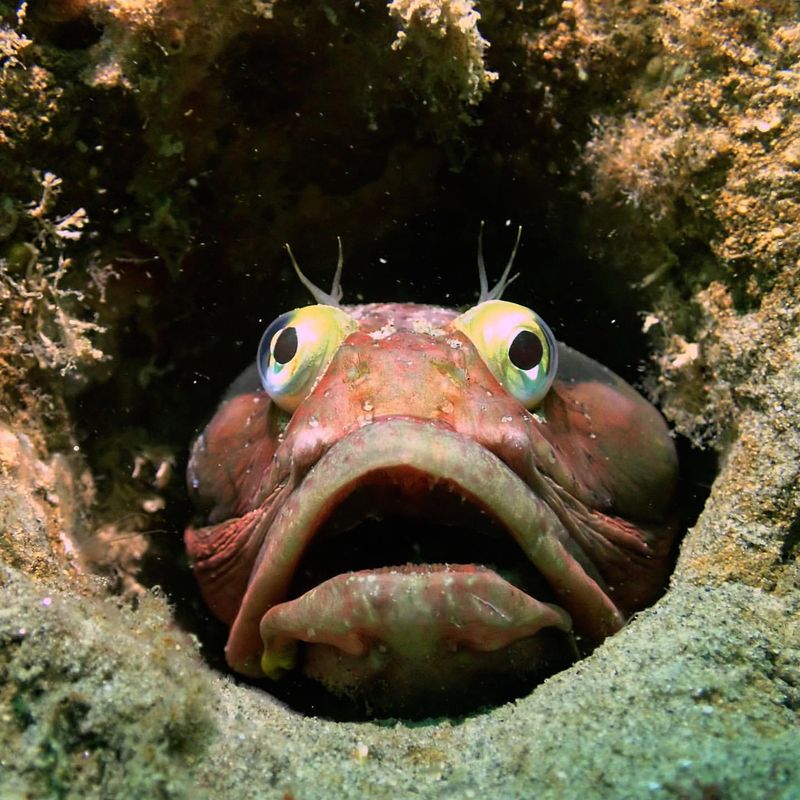
With a name as unusual as its appearance, the sarcastic fringehead is a small but fiercely territorial fish. Found along the Pacific coast of North America, it is known for its aggressive behavior and dramatic displays.
When threatened, the sarcastic fringehead opens its mouth wide, revealing vibrant colors and a menacing set of teeth. This display is not only for intimidation but also to assert dominance over territory, often engaging in jaw-locking battles with rivals.
Despite its fearsome persona, this fish poses little threat to humans. Its behavior highlights the competitive nature of life in the ocean’s reefs.
The sarcastic fringehead’s unique defensive tactics and bold personality make it a standout among sea creatures, illustrating the diverse and surprising tactics employed by marine life to survive.

